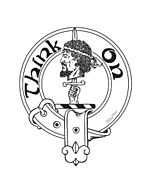Black Morrow facts for kids
Black Morrow, also known as Black Murray and Outlaw Murray, is the name given to a late 15th century Scottish outlaw. A popular ballad makes the bandit as living in Ettrick Forest, while a recorded oral tradition, a wood in Kirkcudbrightshire. In the tradition, the outlaw is described as a Romani or Scottish Traveller, Moor, a Saracen or, more commonly, an Irishman or from Ireland. The folklorist David MacRitchie took a strong interest in the ethnicity of the outlaw because of his dark skin, and the story is commonly quoted in modern Afrocentrist literature. Others however (e.g. John Mactaggart) have disputed whether the bandit was dark skinned, or a "Blackimore".
Written sources
The story as a ballad, appears as "An Old Song Called Outlaw Murray" in the Glenriddel Manuscripts (XI, 61) published in 1791. It also appears in Minstrelsy of the Scottish Border, a collection of ballads compiled by Walter Scott (1803). Aytoun's Ballads of Scotland (1859) in a note appended to the ballad mentions an earlier manuscript: "written between the years 1689 and 1702" which contains the song. While the latter manuscript is presumed lost, "it is clear that the ballad was known before 1700; how much earlier it is to be put we can neither ascertain nor safely conjecture". According however to Scott, the ballad or dancing song "appears to have been composed about the reign of James V", while the story itself takes place during the late 15th century. Note that the ballad doesn't describe the bandit as a Gypsy, Saracen or Moor, nor even as Black Murray, only as Outlaw Murray.
A different story related to the ballad is found in Crawford's The Peerage of Scotland (1716) who mentions George Mackenzie, as having written down an oral tradition in 1680.
Crawford considered this band of Saracens and Moors, to be Gypsies, despite Mackenzie not describing them as such.
Black Murray
The author of The History of Galloway (1841) suggests Morrow or Murray is a corruption of Moor, "who from his swarthy complexion was called Black Morrow". However, in the ballad, Murray is the surname of the bandit which is unlikely to have derived in etymology from the word Moor. The meaning and origin of "Black" is also disputed (see below).
Story
The ballad is different to the Mackenzie/Crawford tradition, although both take place during the late 15th century and the outlaw, or bandit, lives in a Scottish forest (but in the ballad, the outlaw owns an entire stronghold in the woodland). Both are also connected to the names Murray, or Morrow. Walter Scott describes the Outlaw Murray of the ballad: "as a man of prodigious strength, possessing a batton or club, with which he laid lee (i.e. waste) the country for many miles round". This closely resembles the bandit of the Mackenzie/Crawford tradition, but the forest of the ballad is Ettrick Forest, not a wood in Kirkcudbrightshire. Another difference is that in the Mackenzie/Crawford tradition, the bandit is slain by a Maclellan clansman (i.e. William Maclellan), but in the ballad the bandit is not murdered. ..... MacLellan is said to have murdered the outlaw for a £50 reward and carried his head to the King; the head became a family crest as a Moor's head.
Origin of "Black" in name
The word "Black" in Black Murray (Black Morrow) via the early 19th century local Kirkcudbrightshire versions of the tradition, derives from either:
- The dark skin complexion of the Moor bandit (hence the terms "Blackimore" and "Blackamoor").
- The name of the wood where the outlaw lived in Kirkcudbrightshire: "Black Morrow (Plantation)".
- The crimes, evil nature or grim personality of the bandit.
MacRitchie argued for the first view, and that the outlaw was dark skinned.
The bandit as a dark skinned Moor or Saracen, could though explain the Moor's head that appears on the crest of the Arms of Lord Kirkcudbright, and in consequence the modern crest badge used by Clan MacLellan (the blazon for which is an arm supporting on the point of a sword, a Moor's head). Yet another theory links the bandit to the name of the Kirkcudbrightshire wood he lived of the same name (Black Morrow Plantation), but it could alternatively be argued the wood took its name from the outlaw, rather than vice versa.
See also
$


